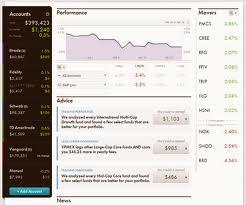Motif Investing Review
What is Motif Investing?
It is a way to build a portfolio based on an investment idea. For example, let’s say you are interested in making an investment into Shale Oil, but you don’t know what companies are heavily involved in the Shale Gale. Well, there’s a Motif for that. It’s called “Shale Oil” and includes a group of stocks so you end up with 30 Stocks in 1 Motif for only $9.95. You can purchase this group of stocks or customize it if you think a better mix of assets is more appropriate. In comparison, purchasing the same group of stocks would cost far more in a conventional trading relationship because each stock would constitute a trade. Motif provides a lot of savings for people looking to invest in market segments or ideas. The good news it that you can also customize your Motif if you disagree with the mix of securities in the portfolio.
How does a Motif compare to an ETF?
A Motif is in some ways an ETF alternative. While an Exchange Traded Fund (“ETF”) has a group of stocks, you are going to pay a management fee that will cut into some of your profits. A Motif is a one time commission, making the Motif a cheaper alternative to a traditional index fund or ETF. The tax implications are different from an ETF though because an ETF is a taxable unit on its own, but a Motif is really the purchase of a number of individual stocks, meaning that your tax return will be more complicated. The other downside is that it requires more self-confidence to invest in a Motif. It’s closer to a do-it-yourself investment philosophy than ETFs.
Who should use Motif?
This is for a savvier investor who is looking to target a specific asset class or trend. You can also use Motif to build a risk adjusted portfolio, if you can figure out what it should look like. I don’t see Motif replacing services like MarketRiders, but it is a lot of fun and a great way to invest in a specific area of interest. You get diversification across a broad subject through Motif, but it isn’t an Index Fund style ETF by any means. I didn’t see any Motif’s that provide an investment strategy based on a target retirement date, but I did see a lot of interesting ideas like “Shale Gas” and “Caffeine Fix.” These don’t sound like long term strategies, rather a low-cost way to get in on a potential trend.
Motif as a very attractive alternative for people who are actively managing their portfolio or interested in taking advantage of perceived market weaknesses. It is a lot of fun to look through the investment ideas and interact with others in the investment community. Motif won’t change your retirement planning but it gives you a cheap and easy way to invest in emerging ideas and trends that normally are reserved for only the wealthy.
Get up to $150 when you start trading at Motif Investing. Learn more.


